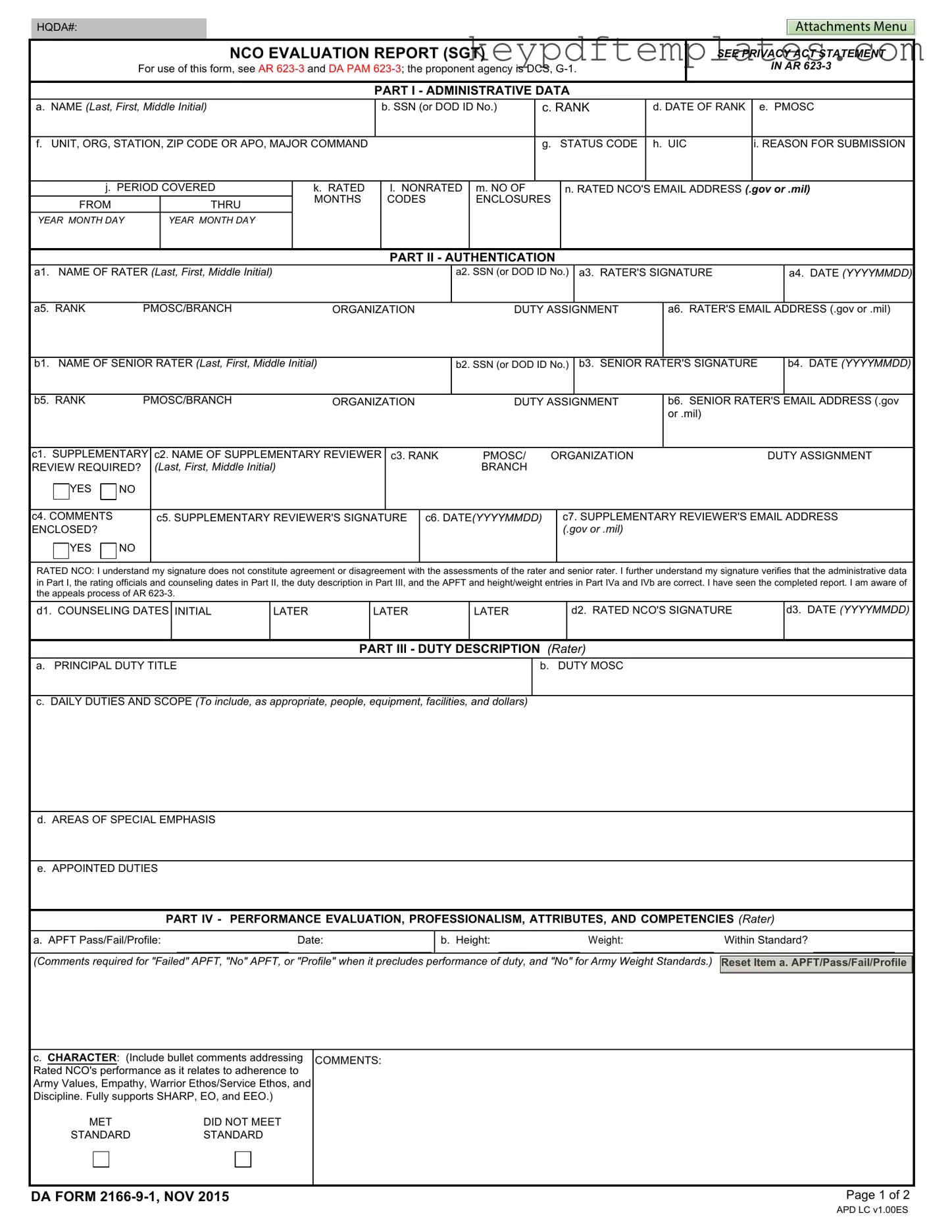Get Da 2166 9 1 Form
The DA 2166-9-1 form is an essential document used for the evaluation of Non-Commissioned Officers (NCOs) in the U.S. Army. This form captures critical performance data, including the NCO's duties, attributes, and overall potential, serving as a key tool for career progression. Understanding its components and requirements is vital for both raters and rated personnel to ensure accurate and effective evaluations.
Modify Document Online
